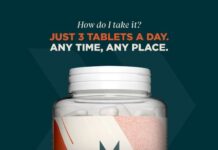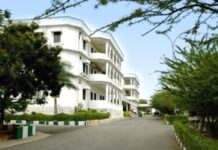
As climate change becomes an issue in global agriculture, heat stress will become an issue for livestock in india. It is accepted that heat stress results from a combination of temperature and humidity over and above the thermoneutral zone of the cow. The NRC (2007) have defined a temperature and humidity index (THI) that correlates with rectal temperature and shows thresholds above which the animal will suffer heat stress.
Effects of heat stress in cows: Heat stress results from the combined effect of elevated ambient temperature and humidity, which decrease the cow’s ability to dissipate body heat. Cows initially depends on non-evaporative cooling methods, such as convection. When the temperature increased the cow turn to panting and drooling of saliva will lose the HCO3 buffers which are essential for maintain rumen pH. Heat stress causes decrease in milk yield, milk fat percentage, feed intake, reproductive performance and, often, bodyweight. If heat stress occurs prior to insemination, it is associated with decreased fertility in cattle which can continue after temperatures have cooled down (West, 2003).
The following strategies are pursued when cows are exposed to heat stress conditions.
I. Management strategies:

2.The outer roof should be painted white using supercem which will reflect sunlight and reduce temperature inside the shed.
3. The use of shade is an important to mitigate heat stress. The dairy cows under shade yielded 10% more milk, had lower rectal temperatures and slower respiratory rates. The requirement of shaded area for dairy cow is 4.5 to 5 square metres. It can be provided either by solid roofs or sheds.
4. Planting trees around the shed will provide shade and protects from direct sunlight.
5. Depending on the design of the shed, either a ceiling fan or an oscilating fan can be installed. An high power wall mounted oscillating fan is more effective than ceiling fan. Fans running at 6.5 to 9.7 km per hour. Fans should be placed at the most efficient height (2.4 to 2.5 m).
6. Sprinklers are installed on the roof to sprinkle water. The use of sprinklers on the cows increase their evaporative heat loss. Low pressure coarse droplets sprinklers (1.8-2.8l per minute, 1.25l per cow) are preferred, as the less air is moving the more times the cow needs to be soaked. When the cows sprayed for 1.5 minutes every 15 minutes, the milk yield is increased to 11.6%.
7. Foggers are small nozzles which produce very fine water droplets which looks like fog or mist. Most of these generated droplets evaporate before they can reach to the ground. As they evaporate, they reduce the shed temperature. These are installed below the roof of the shed and 20 mm PVC 2.5 mm thick water pipelines should be installed within the shed. Foggers are fixed to these pipelines. Each fogger should have a gap of 8 to 10 feet.

1. Washing animals in the afternoon is effective to reduce the heat stress.
2. The empty gunny bags can be hanged on the sides of the shed and sprayed water on these gunny bags produce cooling effect.
II. Nutritional strategies:
1. Provide clean and fresh water, keep the waterer (linear water access: 1.0-1.2 m per cow) preferably in shaded areas.
2. During heat stress, feed intake is reduced by 8-12% or more causing decrease in milk production. To compensate this, concentrate needs to be increased to keep the Dry Matter Intake (DMI) at the desired level.
3. Reduced DMI requires an increase in the dietary mineral concentrations. Cation and anion should be increased (Na and K), as well as trace minerals (Zn, Mn, Cr and Cu).
4. Feed less forage in the diet, as forages can cause heat production in the rumen. Feed low fibre diets, since acetate is not efficiently used by animals during heat stress.
5. The cow’s energy requirement for lactation is unchanged and her energy needs to cool actually increase. Increasing the energy in the diet can be achieved by feeding high quality forage, feeding more grains and use of supplemental fats.
6. Supplementation of Rumen protected fat increase energy density of ration without increasing heat production in the rumen.
7. The crude protein must be increased and Bypass protein should be 36 to 40% of total dietary crude protein intake.
8. Supplementation of vitamins A, C and chelated trace minerals like, Zn, Cu, Mn and Cr help to reinforce the immune system.
9. Providing sodium bicarbonate to replenish the carbonates lost in the urine and prevent metabolic acidosis.
10. Feed additives like live yeast cultures, buffers, fat soluble vitamins (A, D, E), Niacin and selenium can be improve rumen function, immune response, to promote energy utilisation and feed conversion efficiency.
11. Chromium supplementation increase the activity of insulin which improve the glucose uptake by the cell. Because glucose use predominates during heat stress, Chromium supplementation improve milk production in heat stressed cows. (Spears et.al.,2012)
12. Feeding 60-70% of the ration between 8 P.M. to 8 A.M. has successfully increased milk production.
Conclusion:
The conclusion is utilisation of management as well as nutritious strategies can reduce heat stress in lactating dairy cows. Careful consideration should be given to water quantity and quality, feed and micronutrient nutrition before and after heat stress.
References:
J.W.West. 2003. Effects of heat stress on production in Dairy cattle. J. Dairy Sci. 86:2131 2144. Spears.J.W., Whisnant.C S., Huntington GB., Lloyd KE., Fry RS., Krafka K., Lamptey .A. and Hyda. J. 2012. Chromium propionate enhances insulin sensitivity in growing cattle. J Dairy Sci.95:2037–45.
CCI Newswire































